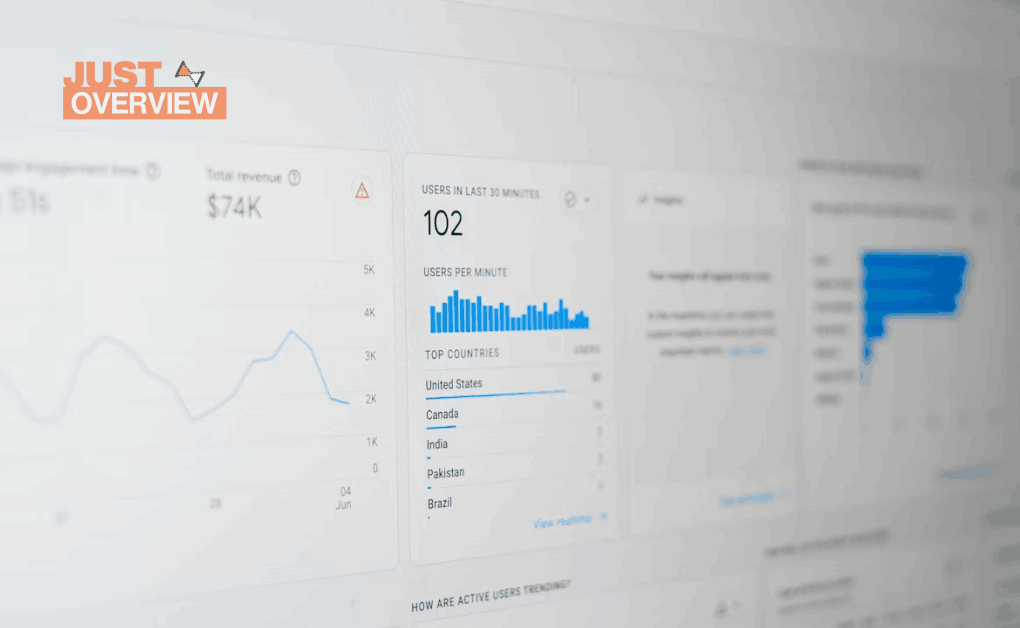How to Rank Your Website on LLMs (AI Models): 10 Practical Steps

Table of Contents
In today’s AI-driven search landscape, ranking on LLMs (Large Language Models) like GPT, Gemini, Claude, and LLaMA is just as important as ranking in Google. Unlike traditional search engines, which rely heavily on backlinks and keyword signals, LLMs prioritize trust, structure, and authority when pulling answers.
This guide will walk you through 10 best practices to make your domain more LLM-friendly so that AI systems treat your website as a reliable knowledge source. By implementing these steps, you can boost brand authority, organic visibility, and traffic from AI-powered search experiences.
1. Build Strong E-E-A-T Signals (Experience, Expertise, Authoritativeness, Trust)
LLMs, much like Google, are cautious about misinformation. They aim to showcase content from sources that demonstrate real-world expertise and credibility. This is why building E-E-A-T signals has become a critical foundation for ranking in AI models.
For example, if two sites publish articles on “cybersecurity trends,” the one authored by a certified security analyst with case studies and references will hold more weight than a generic blog post without author credentials. Adding author details, case studies, and real-world examples not only reassures readers but also signals to AI that your site is trustworthy and accurate.
Best practices–
- Add author bios with real names, credentials, LinkedIn profiles, and professional photos.
- Showcase case studies, client success stories, or first-hand research to prove experience.
- Cite authoritative references and link to credible sources.
- Add About, Contact, and Team pages for transparency.
Example: A blog on “AI in healthcare” authored by a medical researcher with citations from PubMed is far more likely to be quoted by an LLM.
2. Create Structured, Answer-Friendly Content
LLMs thrive on clarity. If your content is structured logically, with short answers supported by detailed explanations, it becomes easier for AI to extract and reuse your information.
Think about how people interact with ChatGPT: they usually expect quick, to-the-point answers but also appreciate when there’s an option to dive deeper. That’s exactly how your content should be written. By combining summaries, FAQs, and clear formatting, you make your content both scannable and AI-ready.
Action steps –
- Use H2 and H3 subheadings for clear hierarchy.
- Provide short definitions and TL;DR summaries.
- Add FAQs with 50–100 word answers for direct use in AI outputs.
- Implement FAQPage and HowTo schema.
- Use bullet points, tables, and key takeaway boxes.
Always answer queries like a human conversation—concise first, detailed second.
3. Earn References & Citations from Trusted Sources
One of the strongest ways to appear in AI-generated answers is by being cited by authoritative websites. LLMs weigh citations as a sign of credibility, much like academic research papers do.
For instance, if your content is mentioned in a Forbes article, a Wikipedia entry, or academic blog, LLMs are far more likely to trust and pull your information. That’s why a mix of PR outreach, guest posting, and publishing unique research is critical for success.
Getting cited should be seen as digital validation—every mention on a credible site strengthens your reputation in the eyes of both readers and AI systems. It also increases your chances of being included in the datasets and training material that LLMs rely on.
Tactics to earn citations –
- Guest posts on industry blogs.
- Academic or research partnerships.
- Press mentions via PR outreach or HARO.
- Publish whitepapers or original studies that others can cite.
Mini outreach template:
Hi [Name], I recently published [topic report] that includes [unique data]. It may add value to your upcoming article. Would you be open to reviewing it?
4. Build Topical Authority with Pillars & Clusters
LLMs don’t just look at individual articles—they assess whether your entire site demonstrates depth in a specific subject area. That’s why building topical authority through pillar and cluster content is so powerful.
To rank on LLMs, don’t just publish one article—create a pillar page with supporting cluster posts like ‘step-by-step guide,’ ‘common mistakes,’ and ‘detailed breakdowns.’ This interconnected structure signals to AI models that your site is a trusted authority.
By strategically linking related content, you’re not only improving SEO but also teaching LLMs that your site owns the topic. This boosts your visibility whenever someone asks an AI about that subject.
Content strategy–
- Create a pillar page (e.g., “LLM SEO Best Practices”).
- Build cluster articles around subtopics (e.g., “FAQ Schema for AI,” “Entity Optimization Guide”).
- Use internal linking to connect cluster posts back to the pillar.
This “hub-and-spoke” model signals to AI that your website is the go-to source on that subject.
5. Add Multimodal & Fresh Content
LLMs don’t just match keywords; they understand concepts, relationships, and context. That’s why you should focus on semantic SEO — covering related entities, synonyms, and connected topics.
Both search engines and LLMs now focus strongly on understanding entities and their relationships. Instead of only looking at a single keyword like “LLM optimization,” they map how it relates to AI models, prompts, responses, use cases, and industries. The more your content explains these connections in plain language, the better your chances of being surfaced. For example, if you mention “LLM optimization strategies 2025” and also connect it with natural language processing, semantic search, and content ranking, LLMs view your page as context-rich and trustworthy.
Implementation tips–
- Include infographics, charts, and explainer videos.
- Always provide captions, transcripts, and alt text.
- Update content quarterly with “last updated” dates.
Example: A “how to rank in LLMs” article with a step-by-step infographic and a short video summary increases its chances of being quoted.
6. Technical & Crawlability Essentials
Without strong technical SEO, even the best content may not be discoverable. Your website needs strong technical SEO as a base. Without it, search engines and AI tools may not find or show your content. For example, a website with poor mobile performance or missing sitemaps might never show up in AI-generated answers, no matter how valuable the content is. By fixing issues like load speed, crawl paths, and structured data, you not only make your site user-friendly but also signal to both Google and LLMs that your content is reliable and ready to be referenced.
Checklist –
- Fix Core Web Vitals (fast load speed, mobile-first design).
- Use HTTPS, robots.txt, sitemap.xml, and canonical tags.
- Remove duplicate or thin content.
- Validate structured data with Google’s Rich Results Test.
Think of this as ensuring LLMs can actually read your site properly.
7. Entity Optimization & Knowledge Graph Presence
LLMs rely heavily on entities (people, places, organizations) stored in Knowledge Graphs.Getting cited by other Knowledge Graph–recognized entities (like being referenced on Wikipedia, government portals, or major publications) strengthens your position as a reliable entity. LLMs interpret such citations as validation of your authority.
Steps to optimize –
- Create a Wikidata entry for your brand.
- Set up and verify a Google Business Profile.
- Keep your business Name, Address, and Phone number (NAP) the same on all platforms.
- Use Organization schema and add sameAs links to profiles like LinkedIn, Crunchbase, and social media.
When your website becomes an entity, it’s easier for LLMs to trust and reference you.
8. Be Present in AI-Indexing Sources & Datasets
LLMs often train on publicly available datasets. Being present there increases visibility. Content that gets mentioned or linked within widely referenced datasets (like GitHub projects or academic papers) carries more weight in AI systems. Think of this as building academic-style credibility — the more credible datasets cite you, the stronger your AI footprint becomes.
Where to publish–
- Common Crawl-indexed websites (your blog counts!).
- Wikipedia and Wikimedia Commons.
- ArXiv, PubMed, GitHub, and government portals.
- Open datasets and reports on your website.
Important– Never include personal identifiable information (PII) in open datasets.
9. Write for Conversation: Conversational SEO & Prompt Matching
Unlike search engines, LLMs answer natural language prompts. To maximize reach, try to get your conversational answers quoted or reposted on reputable sites like Quora Digest, industry newsletters, or expert roundups. If authoritative platforms echo your conversational answers, LLMs are more likely to surface your response directly.
Content strategy:
- Turn keywords into questions (e.g., “How do I rank in LLMs?”).
- Provide direct short answers (30–60 words).
- Expand into longer explanations for depth.
Example: Instead of “LLM ranking best practices,” write:
- “How do I make my website appear in ChatGPT answers?”
- “What content do LLMs prefer?”
10. Reputation, Social Proof & Community Signals
LLMs track a brand’s reputation across social media, forums, and online communities. When your brand is mentioned positively in trusted communities (like Reddit AMAs, Forbes expert panels, or respected Slack groups), it works like third-party validation. LLMs interpret these as signals that people recognize and trust your expertise, boosting your AI visibility.
Ways to build trust:
- Encourage reviews and testimonials.
- Be active on LinkedIn, YouTube, Reddit, and industry Slack groups.
- Create a press page showcasing brand mentions.
- Monitor sentiment with tools like Google Alerts or Brandwatch.
Positive community signals help reinforce your credibility in AI systems.
Implementation Roadmap (3–6 Month Plan)
Month 0–1 (Quick Wins)–
- Add author bios & E-E-A-T signals.
- Implement FAQ schema and canonical fixes.
- Publish sitemap and fix Core Web Vitals.
Months 2–3–
- Launch a pillar page + 3 cluster articles.
- Outreach for at least 5 authoritative backlinks.
- Create infographics and one video summary.
Months 4–6–
- Add Wikidata entry & Knowledge Graph schema.
- Publish one whitepaper or dataset.
- Expand into advanced link-building campaigns.
KPIs to track– branded mentions, schema impressions, backlinks, conversational query traffic.
FAQs on LLM SEO
Q1- Can LLMs index my website like Google?
LLMs don’t crawl in real-time like Google, but they pull from large datasets (Common Crawl, Wikipedia, GitHub). You can boost your visibility by getting mentioned on trusted sources and sharing well-structured content.
Q2- Is schema markup necessary for LLM ranking?
Yes, schema helps AI parse your content more effectively. FAQ, HowTo, and Organization schema are highly recommended.
Q3- What content format do LLMs prefer?
LLMs prefer short, direct answers, bullet lists, and structured FAQs. Adding images, charts, and transcripts boosts discoverability.
Q4- Are backlinks still important for LLM visibility?
Absolutely—backlinks from high-authority domains build credibility and increase chances of being included in AI responses.
Q5- How soon will AI models pick up my content?
There’s no fixed timeline, but publishing on trusted datasets and getting cited by authority sites speeds up visibility.
Conclusion
Ranking on LLMs like GPT, Gemini, and Claude is the next big step in SEO. Unlike traditional search, the focus is on trust signals, structured content, and entity-level authority.
If you want to future-proof your domain:
- Build strong E-E-A-T.
- Optimize for entities and structured data.
- Publish content worth citing.




